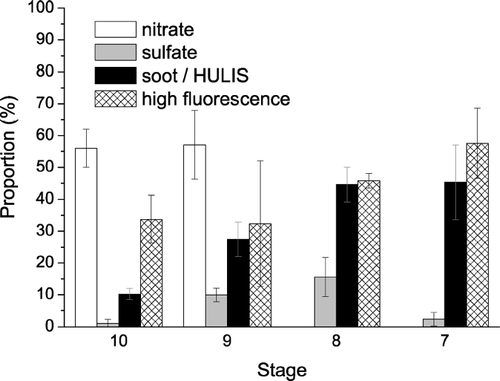Figures & data
TABLE 1 ELPI stage cut-off diameters and exemplary mass size distribution of air particulate matter collected on 5–14 May 2003: Da,50% is the aerodynamic diameter of particles that are deposited with 50% efficiency on a given stage, i.e., the lower cut-off diameter of the size range of particles deposited on this stage (CitationELPI 2003)
FIG. 1 Raman spectra (λ0 = 514 nm) of different soot samples and related carbonaceous materials. The spectra are offset for clarity.
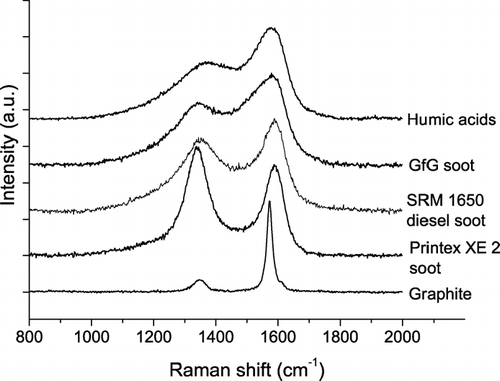
FIG. 2 Integrated band intensity ratio I D3 /I G vs. apparent elemental carbon (ECa) fraction of reference materials for soot and humic-like substances (mean values ± standard deviations).
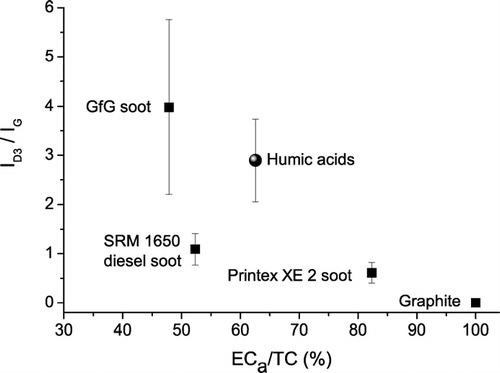
FIG. 3 Full widths at half maximum (FWHM) of D1 band vs. apparent elemental carbon (ECa) fraction of reference materials for soot and humic-like substances (mean values ± standard deviations; linear fit to graphite and soot samples).
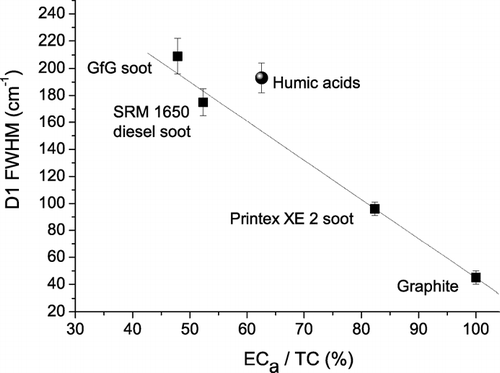
FIG. 4 Exemplary Raman spectra (λ0 = 514 nm) of soot or humic-like substances in air particulate matter collected in May 2003 on ELPI stages 2, 4, 6, 8, and 10. The spectra are offset for clarity.
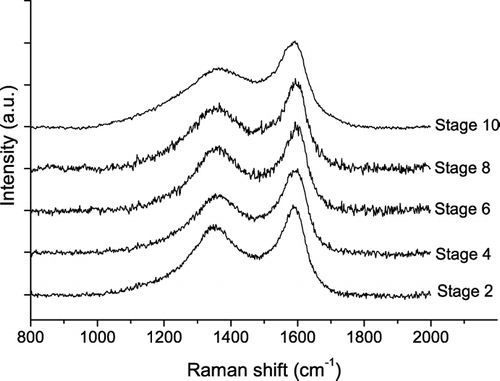
FIG. 5 Exemplary Raman spectra (λ0 = 514 nm) of soot or humic-like substances in air particulate matter collected in May 2003 on ELPI stages 10 (a, humic-like) and 4 (b, soot-like) with five band fits.
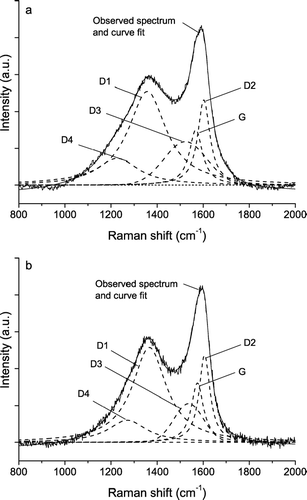
FIG. 6 Full widths at half maximum (FWHM) of D1 band vs. ELPI stage number of aerosol particle samples collected in May (a), September (b), and December 2003 (c) (mean values ± standard deviations).
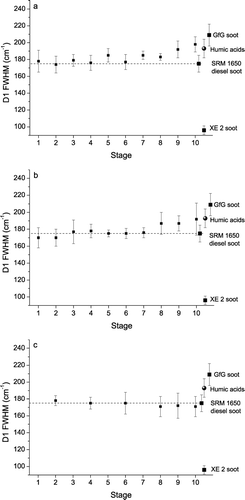
FIG. 7 Integrated band intensity ratio I D3 /I G vs. the ELPI stage number for aerosol particles collected in May (a), September (b), and December 2003 (c) (mean values ± standard deviations).
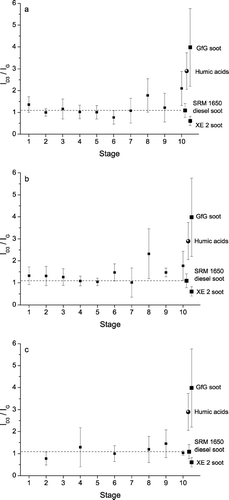
FIG. 8 Exemplary Raman spectra (λ0 = 514 nm) of inorganic compounds in air particulate matter collected in May 2003 on ELPI stages 10 (a), 9 (b), 8 (c), 7 (d), and 6 (e).
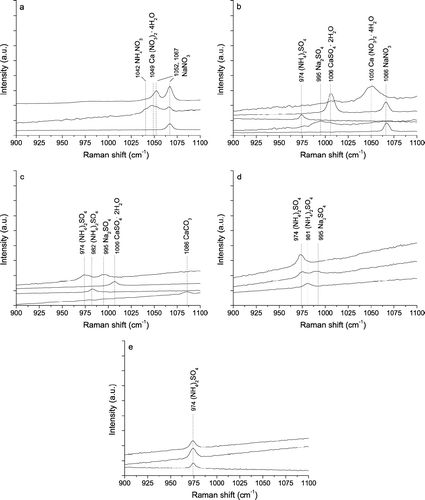
FIG. 9 The proportion of the Raman spectra (λ0 = 514 nm) with signals characteristic for nitrates, sulfates, soot/HULIS, and high fluorescence in air particulate matter collected in May 2003 on ELPI stages 10–7.
